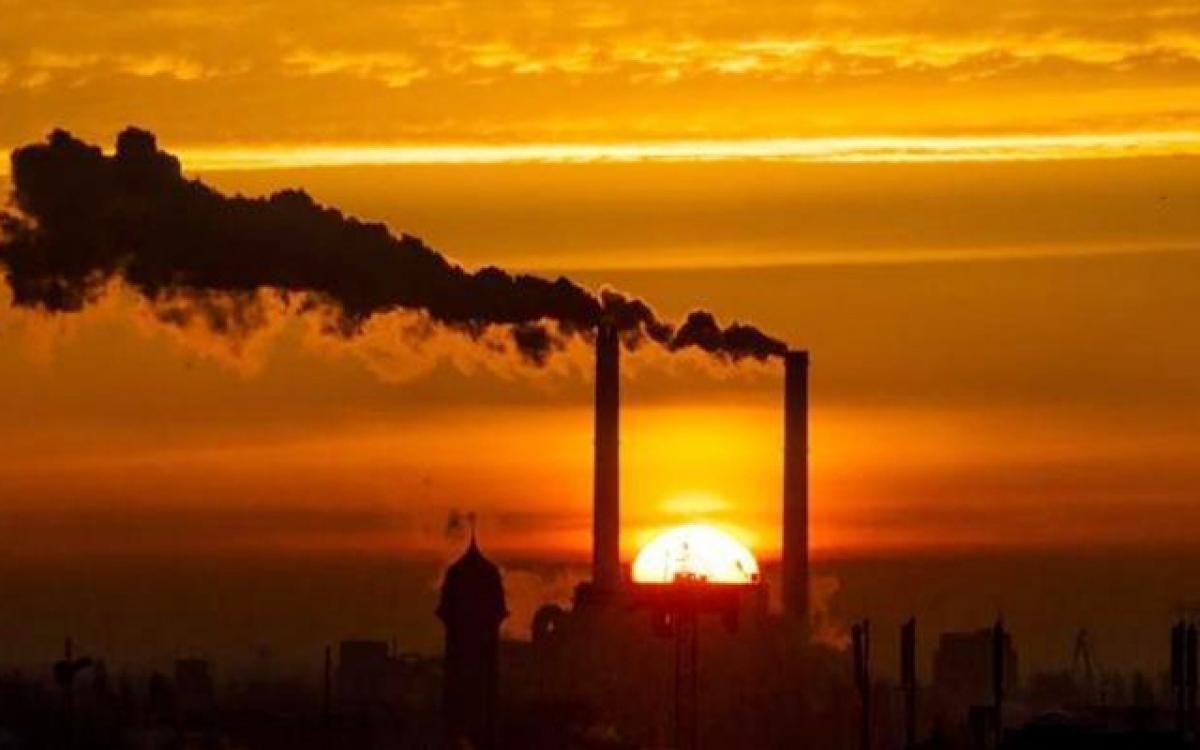Live
- First Impressions and Unboxing of the MacBook Pro M4: A Powerhouse for Professionals and Creators
- China Gears Up for Potential Trade War Amid Trump’s Tariff Threats
- Small Farmers Gain Less by Selling to Supermarkets: Study Reveals
- Why Despite the Controversy, America Is Anticipating the Mike Tyson vs. Jake Paul Fight
- Sanju Samson and Tilak Varma Shine: Record-Breaking Feats in 4th T20I Against South Africa
- India Urges $1.3 Trillion Annual Climate Support for Developing Nations
- Bad air: 106 shuttle buses, 60 extra Metro trips planned to make Delhiites give up cars
- WHO reports declining monkeypox cases in Congo
- CM Attends Kotideepotsavam on Kartika Purnima
- PKL Season 11: Raiding trio of Devank, Ayan, Sandeep help Patna Pirates rout Bengal Warriorz
Just In
Mornings experience the peak pollution levels in cities


Mornings experience the worst air pollution in four Indian cities, according to an analysis of particulate matter (PM) 2.5 data from IndiaSpend’s #Breathe air-quality sensors in Bengaluru, Chennai, Delhi and Mumbai between March 15 to April 15 2016.
If you think mornings are the best time for outdoor exercise, you’re wrong.
Mornings experience the worst air pollution in four Indian cities, according to an analysis of particulate matter (PM) 2.5 data from IndiaSpend’s #Breathe air-quality sensors in Bengaluru, Chennai, Delhi and Mumbai between March 15 to April 15 2016.
Bengaluru: Best air quality–midnight
The worst air was at 7 am, as PM 2.5 concentrations peaked at 61.54 micrograms per cubic metre of air (µg/m3). The air quality improved as the day wore on, worsening by evening at about 5 pm, reaching a late-evening high at 7 pm (57.60 µg/m3). The best air quality was registered around midnight, when PM 2.5 levels fell as low to 40.12 µg/m3.
Chennai: Best air quality—3 pm
The worst air was at 7 am, with PM 2.5 levels (61.54 µg/m3) reached their peak. Levels began to peak over the night and slide during the day, after 7 am. The best air quality was recorded in the afternoon, at 3 pm, with PM 2.5 levels reaching as low as 20.76 µg/m3.
Delhi: Best air quality—4 pm
Mornings were the worst time, with PM 2.5 levels reaching as high as 108.16 µg/m3 at 7 am. Air quality gradually improved as the day wore on, registering the cleanest air at 4 pm. (22.84 µg/m3). Pollution levels then picked up through the night.
Delhi topped the list of the world’s most-polluted cities, according to the World Health Organisation (WHO).
Mumbai: Best air quality—5 pm
The worst hour for a Mumbaikar is 8 am, with PM 2.5 levels reaching 48.61 µg/m3; the air started to worsen after 5 am. The best air quality was registered at 5 pm, when PM 2.5 levels were 22.38 µg/m3.
Outdoor air pollution causes 670,000 deaths annually in India, according to a 2014 research paper from the Indian Institute of Management-Ahmedabad.
Air pollution has become a global concern with rising air pollution levels, as outdoor air pollution in cities and rural areas across the world estimated to cause 3.7 million premature deaths in 2012, according to the WHO.
Particulate matter is the term for particles found in the air, including dust, dirt, soot, smoke, and liquid droplets. These are classified according to their diameter. Particles less than 2.5 µm (micrometres) are called PM 2.5. They are approximately 1/30th the average width of a human hair. Particles between 2.5 to 10 µm in diameter are called PM 10.
PM 10 and PM 2.5 include inhalable particles that are small enough to penetrate the thoracic region of the respiratory system. The health effects of inhalable PM are well documented, caused by exposure over both the short-term (hours, days) and long-term (months, years). They include: Respiratory and cardiovascular morbidity such as aggravation of asthma, respiratory symptoms, and an increase in hospital admissions; and mortality from cardiovascular and respiratory diseases and from lung cancer.
There is good evidence of the effects of short-term exposure to PM 10 on respiratory health, but for mortality, and especially as a consequence of long-term exposure, PM 2.5 is a stronger risk factor than the coarse part of PM 10.
There is a close relationship between exposure to high concentrations of small particulates (PM 10 and PM 2.5) and increased mortality and morbidity from cardiovascular/respiratory diseases and cancer, both daily and over time, according to the WHO.
(In arrangement with IndiaSpend.org, a data-driven, non-profit, public interest journalism platform. The views expressed are those of India Spend. Feebback at [email protected])

© 2024 Hyderabad Media House Limited/The Hans India. All rights reserved. Powered by hocalwire.com






